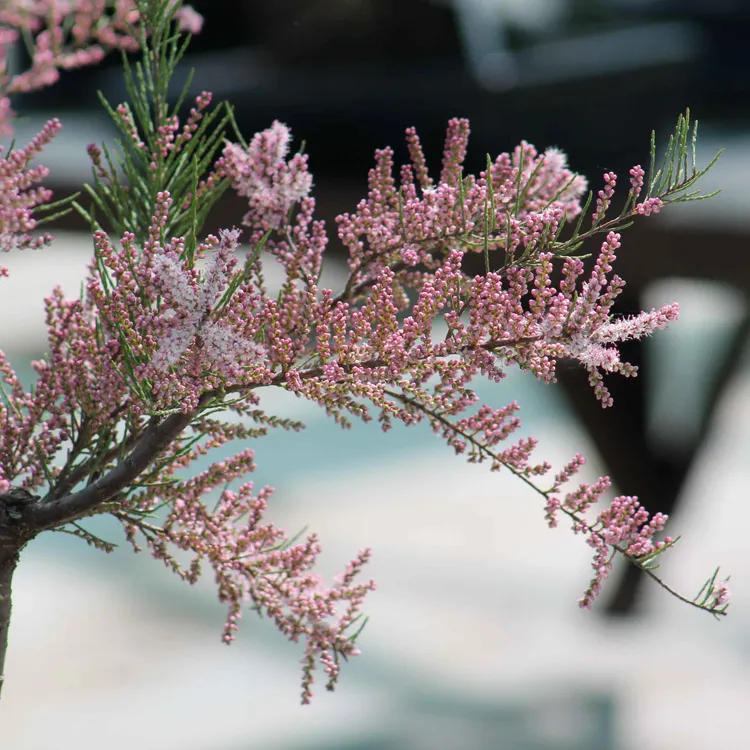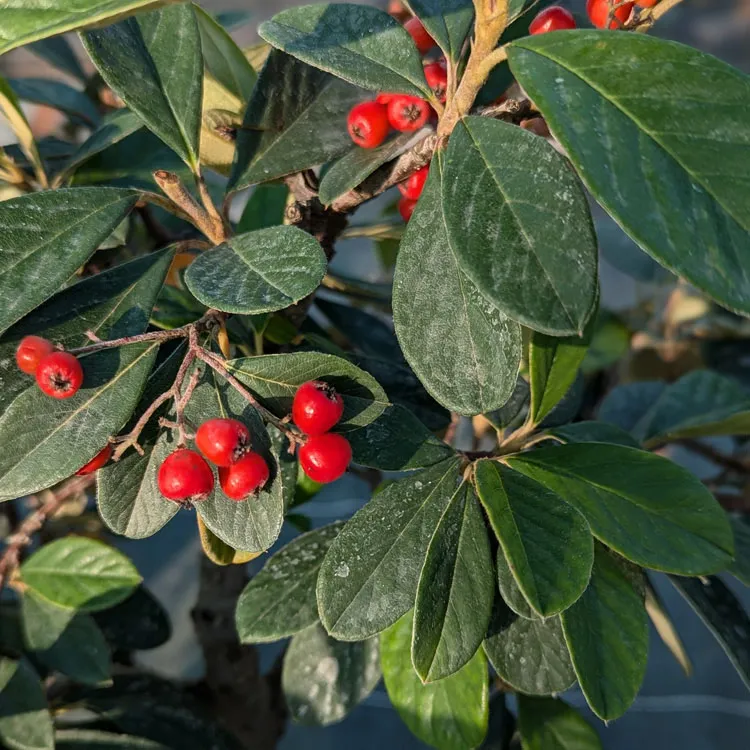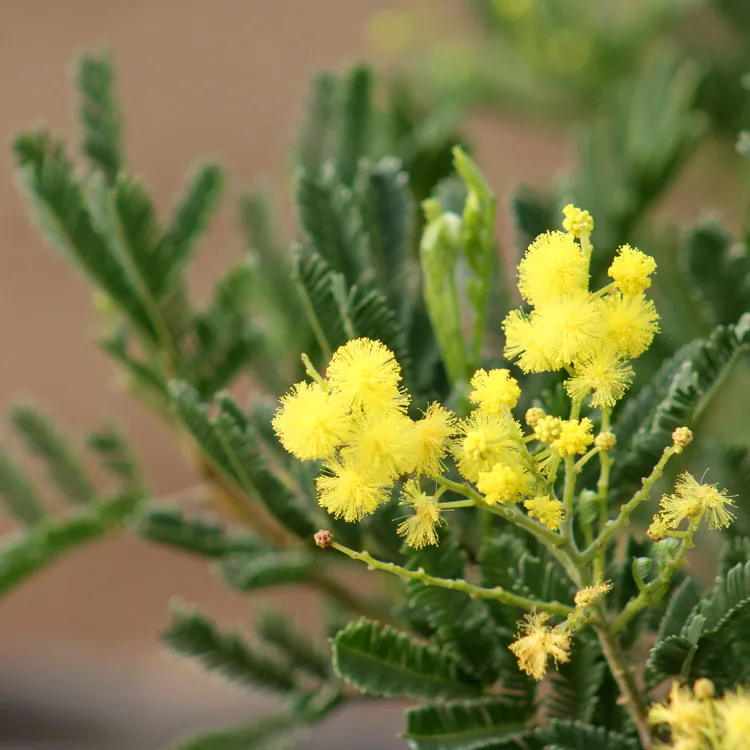It is also called trident maple in reference to the shape of its leaves which form 3 lobes. It is a maple tree with strong root growth, develops massive trunks, has beautiful bark and colorful foliage in spring and fall. It is one of the most prized species for the creation of bonsai trees.
However , it is one of the least known bonsai maples, even though it has a lot of qualities and is disconcertingly easy to grow.
So it was time to focus on this tree, hoping to make you want to make it a place in your bonsai collection!
» See all our Burger maples available for sale online
The Burger, another Japanese maple bonsai
+ Family: Aceraceae
+ Origin: Japan, Korea, China
+ Foliage: small leaves formed by 3 lobes, bronze in spring, dark green in summer and turning orange-yellow red in autumn.
Japanese maples, or Acer Palmatum, are highly prized by bonsai enthusiasts because of their delicate and colorful foliage. They are also very often found in Japanese gardens. At home, the Burger maple is a little less known but in Japan it is one of the emblematic species, and the Japanese call it Kaede. It is difficult, if not impossible, to find in garden centers or nurseries. The only way to get it is to go to the bonsai specialists, and we grow a lot of them in our nursery!
On older trees, the bark of the Burger maple wrinkles and peels in places. It is a more masculine tree than the Palmatum, more powerful, especially with its trunk that grows strongly when grown freely. It also lends itself to rock compositions, with time the powerful roots will enclose the stone, giving the illusion of a tree that has grown on a mountainside whose earth has been gradually eroded.
The foliage of this maple also takes on beautiful colors. In spring, the buds open up and reveal small, bronze-coloured leaves. In a few days they turn green and in autumn the tree is adorned with its most beautiful colors ranging from yellow to orange.
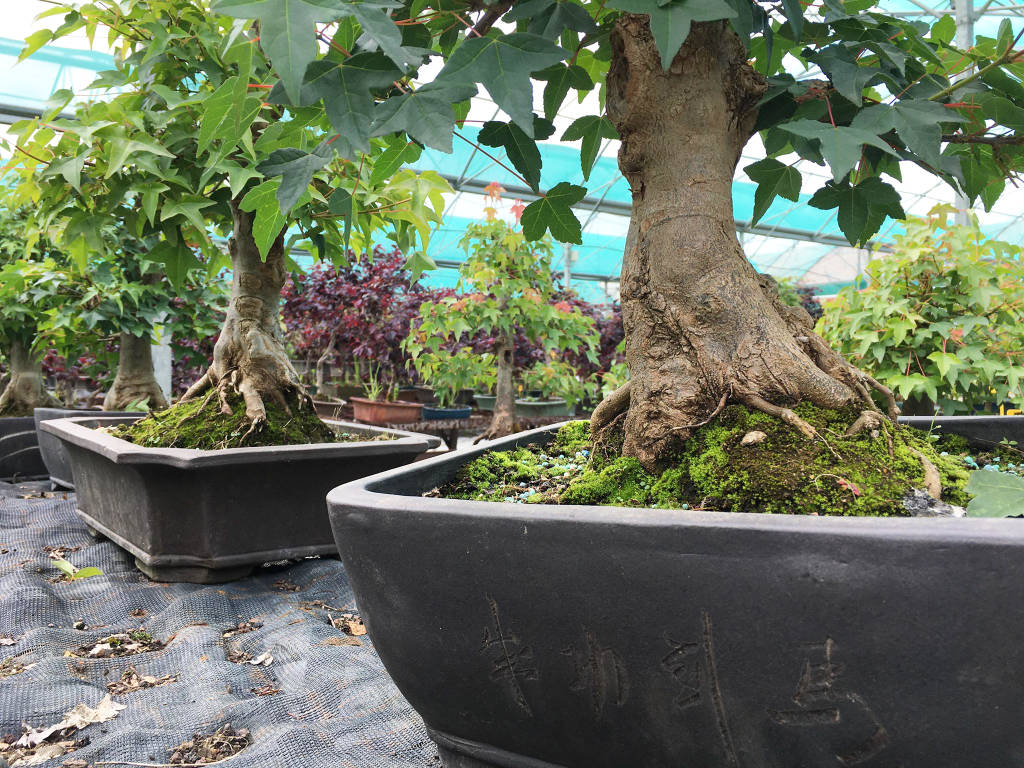
How do you grow a Burger maple in bonsai?
Where to place it during the summer or winter?
The trident maple is much more tolerant of sun and wind than the Palmatum, it can stay in the sun most of the time without any problems. It is only during very hot weather that it needs to be protected to avoid burns on the leaves. In this case, an eastern exposure sheltered from the wind is preferable, in order to give the morning sun and put it in shade from noon.
However, in our bonsai nursery, all of Burger's maple trees are in full sun. Because we grow them in pottery that is a little deeper than the ones usually used for exhibitions. This keeps the roots cool, prevents drying out and burnt leaves.
Too often, hobbyists put their bonsai in very flat pottery, because the aesthetics of the set are better. But this is detrimental to the cultivation of the tree. As long as you don't plan to display your bonsai in an exhibition, don't take pottery that is too flat!
So throughout the growing season, place your maple tree in full sun, this will promote small leaves, short internodes and beautiful fall colors. Maximum sunlight is imperative to achieve this beautiful orange color!
The Burger maple is less hardy than the Palmatum, it must be protected during the winter. As soon as temperatures drop below -3°C, it must be protected from freezing. Above all, it is the roots that need to be protected; If you don't have a cold greenhouse, place the pot on the ground and cover it with a good mulch. Obviously, avoid placing it in the middle of the north wind!
Watering
Maple trees like cool soil , and Burger's maple is quite water-hungry during the growing period. So be generous with watering, but don't overwater either. When it's hot, water every day, if not only when the top of the substrate is dry.
Whereas with Palmatum good watering management is necessary to control the length of the internodes and thus refine the tertiary branching, the Burger maple is less of a problem. You can water without asking too many questions.
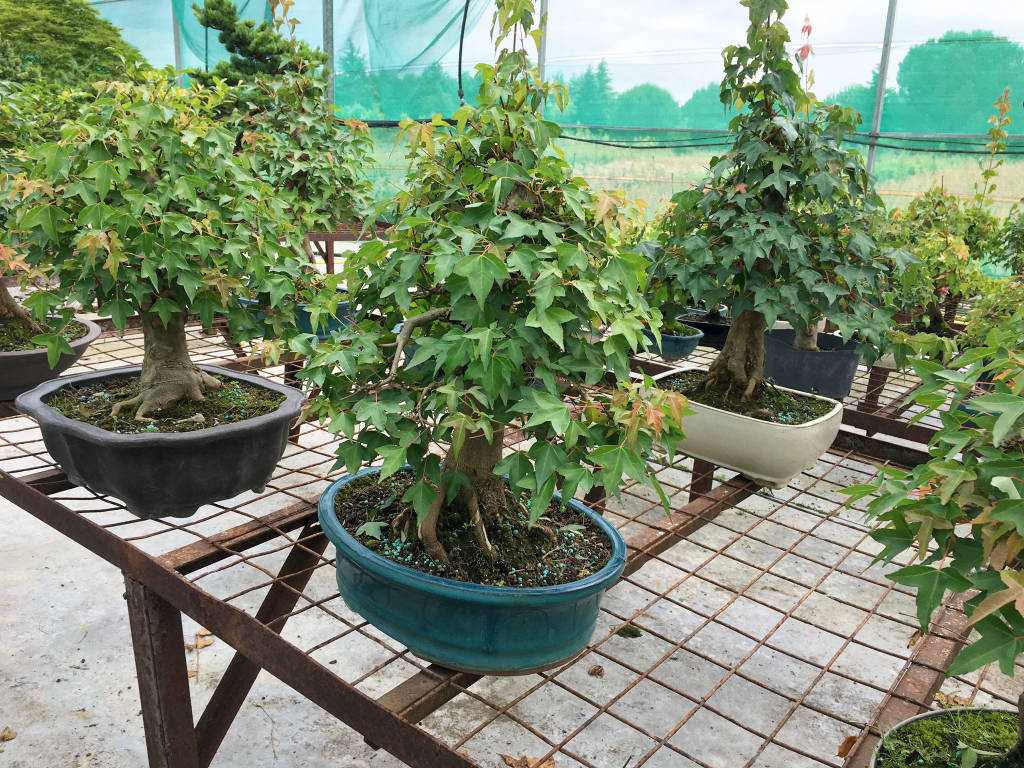
Substrate & Repotting
A good amount of organic matter is needed to keep the soil cool and prevent the roots from drying out. Use at least 30% composted pine bark combined with a draining substrate such as pumice. On the one hand, this will keep a good humidity in the pot (and avoid watering several times a day), while ensuring good drainage.
Burger maple has vigorous root growth, and should be repotted more frequently than Palmatum. Generally we repot every 3 years, but it depends on each tree. If the watering water has trouble penetrating the substrate, or if you see that the bonsai is starting to lift slightly out of its pot (the roots will colonize the bottom of the pot and push the root ball), then it's time to repot.
A young bonsai burger maple will repot more frequently than a more mature one. And it is when the roots begin to colonize the pot that the fine branching develops. So learn to observe your bonsai, don't repot according to a well-established schedule but according to the needs of the tree!
Repotting is done in the spring, from the moment the buds change color, swell and begin to open. It's better to repot too late than too early. Even if the burger is covered in leaves, you can still repot, then simply place it in partial shade for 2 weeks. We avoid (forbid) repotting in winter or worse in autumn. For repotting to go well, there must be root activity: this is what will allow good healing of the cuts and the rapid creation of new roots.
Fertilization
Wait until the first shoot of the year is developed, i.e. the most vigorous twigs have developed between 5 and 7 pairs of leaves. Then start giving fertilizer every two months, until the fall. Prefer low-nitrogen fertilizers, unless you really want to "make wood", i.e. make the trunk or branches bigger.
We combine both an organic fertilizer with a chemical fertilizer with a low nitrogen content (lower value of N, and higher value of P and K). This strengthens the tree and results in beautiful foliage colors.
When and how to prune a Burger maple?
- Structure pruning during the winter : the leaves have fallen and you can observe the entire structure of the tree. Prune branches or twigs that detract from aesthetics. That is, the ones that intersect, point upwards or downwards. It is also important to keep only two tees at each intersection. Shorten the year's shoots at the first internode so that you have a compact branching.
- Spring pinching, when the bud opens and reveals the first pair of leaves, cut with fine scissors or by breaking this shoot with your fingers (hence the name pinching). This will force the maple to create a new shoot with a shorter internode, which will result in a very compact branching. This technique is practiced on a mature tree on which you want to work on tertiary branching. The pinching period is spread over several days for the same tree because not all the buds will open at the same time. So be careful!
- Burger maples are generally not defoliated. If the foliage is really dense, in early summer simply lighten it by cutting off every other leaf to let light into the tree. This is what will promote the appearance of buds on the branches, at most the very trunk.
- Maintenance pruning, during the growing season, as soon as the twig has developed 5 to 7 pairs of leaves, shorten to one paure with a good pair of scissors. The Burger grows fast, and you'll need to do several sizes per year.
To go further, see: how to prune a bonsai maple.
Can you tie a trident barn?
This is something that is generally avoided on all maple trees, as the wire tends to mark the bark and leave traces that will often never disappear. In addition, the wood is very brittle, it is impossible to bend a branch.
However, if you want to improve the aesthetics, it is possible to slightly change the position of the not too large branches by applying a very loose ligature. Do not tighten or the wire will mark. Be careful to remove the ligature as soon as you see that the wire is starting to tighten the branch (be careful, during the growth period it can go very quickly, so you have to check every day).
» See all our Burger maples available for sale online
Also read


 Production of French Bonsai
Production of French Bonsai











































